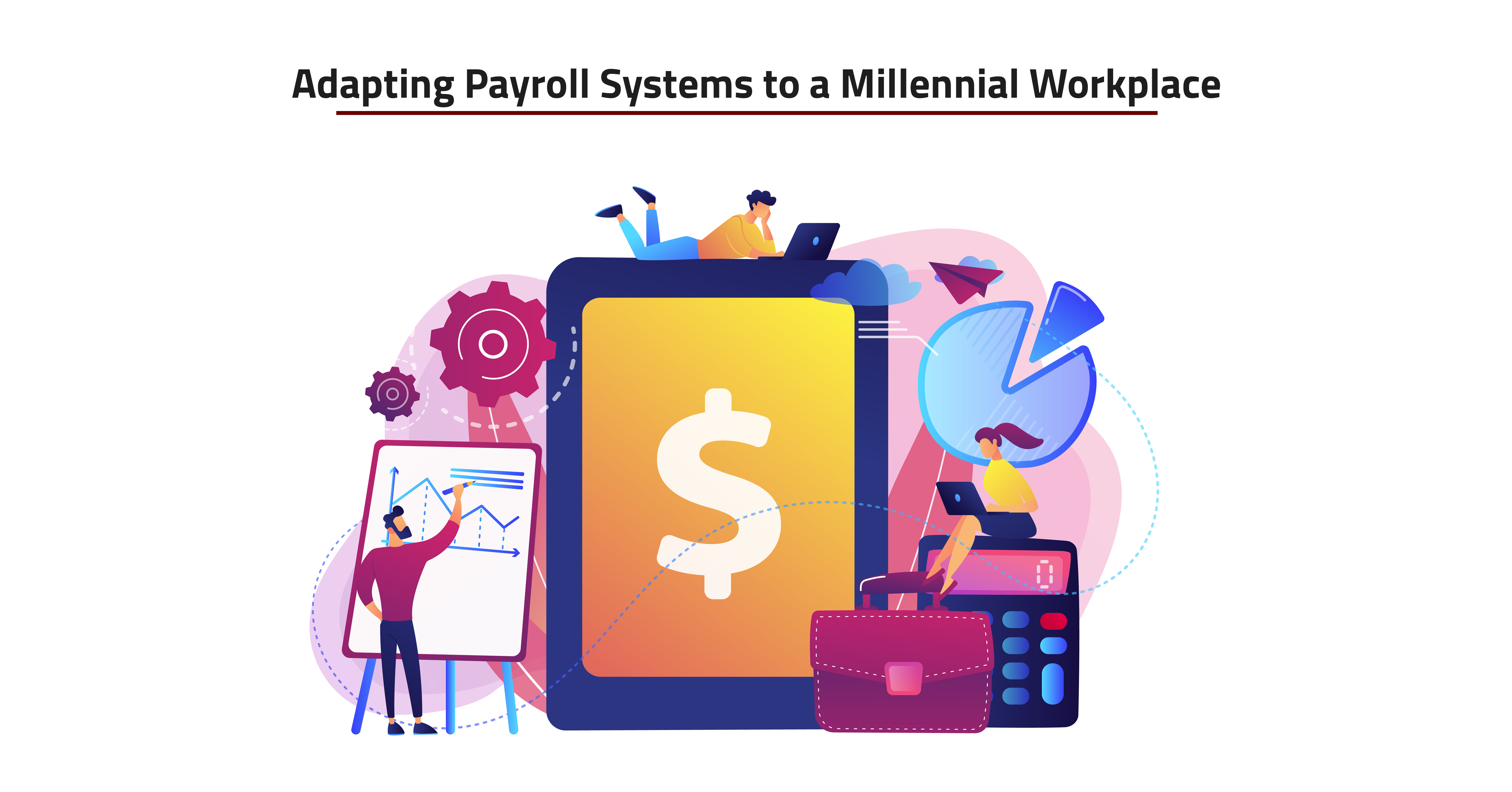
Adapting Payroll Systems to a Millennial Workplace
The time of the millennials is here. Gen Y dominates the workforce of most organizations. At least, that’s what Deloitte’s Millennial Survey says – by 2025, they will comprise 75% of global personnel.(1)
This young generation of workers is unlike any before – they shirk rigid corporate structures, demand flexibility, and require instantaneous responses. Naturally, to retain such a workforce, companies must adapt. Traditional human resource policies and payroll management systems require an overhaul to appeal to their tastes in this regard.
Flexible Workplaces
If there’s one thing millennials treasure, it is the freedom to do things on their own whim. Their lifestyle involves more movement, and they demand time to have interests outside of work. One way a company can accommodate that need is to offer more flexibility. This could mean flexible work hours, remote working options, or a dynamic office environment that does not confine them to a single desk.
Fortunately, evolving tools like encrypted software, co-working spaces, and cloud-based storage systems are enabling companies to meet these demands while also allowing them to monitor employee engagement. Flexible payroll policies also enable remuneration calculation based on the flexibility offered, making it convenient for both employees and the employer.
Payment Methods
As a tech savvy generation seeking instant gratification, it is no surprise that Gen Y is also the fastest adopter of new payment methods. Living paycheck-to-paycheck means the millennial worker needs quick access to funds, thereby increasing the popularity of peer-to-peer payment services like PayPal. Usage of social media payment options, eWallets, and mobile applications have also been on the rise. This is a workforce that is fast warming up to payment in digital currencies and virtual money.
Prepaid payroll cards are also immensely popular among these youngsters. Not wanting to be weighed down by debt, Gen Y prefers managing their spending within the resources they have. Payroll cards also avoid banking fees, can help people manage discretionary funding better, and separate savings from income. Administratively, it can help organizations manage employee accounts better, and simplify onboarding payroll outsourcing services as bank details are not required.
Leveraging Technology
With single touch access available through multiple applications/platforms, organizations that deploy sound technology in all spheres, including workforce management, tend to do better. Not only can it help with evaluating employee satisfaction, but data analytics can be leveraged to drive employee sentiment, motivation, and organizational performance.
Aligning work across teams is easily managed with tools like video conferencing, while mobile applications offer access to information at all times. Clocking productive hours feeds data into employee management models, resulting in better all round performance.
Changing times call for innovative management policies. Companies need to find means to tweak their human resource management to meet ever-evolving workforces. Adapting your payroll management systems or equipping your payroll outsourcing services to meet the demands of the new generation will need careful consideration to ensure that they align with organizational goals.


